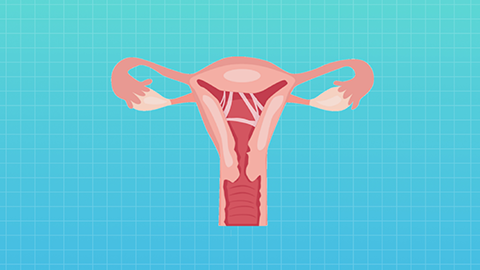What causes uterine adhesions?
Generally, uterine adhesion may be caused by factors such as injury from intrauterine surgical procedures, retained placental tissue after childbirth, endometritis, intrauterine tuberculosis, or a history of multiple miscarriages. It is recommended to seek timely medical consultation to identify the underlying cause and undergo appropriate treatment under a physician's guidance. Detailed analysis is as follows:

1. Injury from intrauterine surgical procedures: Intrauterine surgeries such as induced abortion and hysteroscopy may damage the basal layer of the endometrium, leading to adhesion between the uterine walls, particularly in cases of improper postoperative care. Postoperatively, medications such as estradiol valerate tablets, progesterone capsules, and aspirin enteric-coated tablets should be taken as directed to promote endometrial repair. Patients should avoid strenuous physical activity, maintain external genital hygiene, and reduce the risk of adhesion formation.
2. Retained intrauterine tissue after childbirth: Retained placental or fetal membrane tissues in the uterine cavity after delivery may chronically irritate the endometrium, triggering inflammation and adhesion formation, often accompanied by prolonged lochia and mild lower abdominal pain. A dilation and curettage (D&C) procedure should be performed by a physician to remove the retained tissue, followed by administration of anti-infective medications such as cefixime dispersible tablets, metronidazole tablets, and levofloxacin hydrochloride capsules to control infection and promote uterine recovery.
3. Endometritis: Infection of the endometrium by bacteria, chlamydia, or other pathogens can cause chronic inflammation, leading to tissue necrosis and adhesion formation during the healing process. Symptoms may include increased vaginal discharge and irregular bleeding. Patients should follow medical advice to use antibiotics such as cefuroxime axetil tablets, azithromycin capsules, and Baisechan capsules to control the inflammation.
4. Intrauterine tuberculosis: Mycobacterium tuberculosis infection in the uterine cavity can damage the endometrial tissue, resulting in intrauterine adhesions. This condition may be accompanied by low-grade fever, night sweats, and reduced menstrual flow. Patients should follow medical instructions to undergo anti-tuberculosis treatment with medications such as isoniazid tablets, rifampicin capsules, and pyrazinamide tablets.
5. History of multiple miscarriages: Repeated induced or medical abortions can cause recurrent damage to the basal layer of the endometrium, increasing the risk of uterine wall adhesion, which may even lead to amenorrhea in severe cases. If adhesions have already formed, hysteroscopic adhesiolysis may be performed to separate the adhesions. Postoperative medication should be used to promote endometrial regeneration and prevent re-adhesion.
In daily life, it is important to maintain good hygiene during sexual activity and avoid unprotected sex to reduce the risk of intrauterine infections. Effective contraceptive measures should be taken when there is no plan for pregnancy to prevent unintended pregnancies and abortions. During menstruation, it is important to stay warm, avoid strenuous exercise, and maintain a regular lifestyle to support uterine health.




